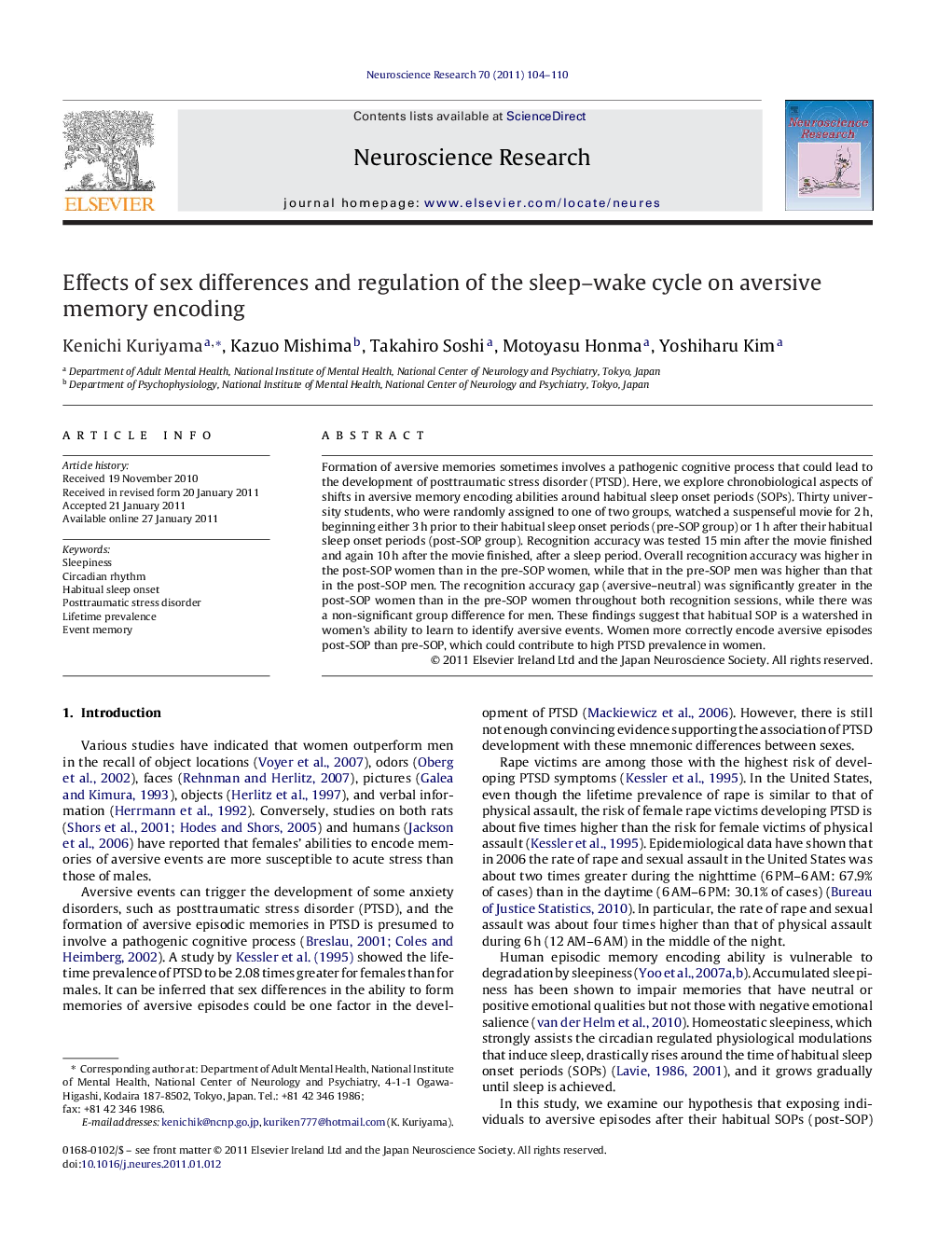| کد مقاله | کد نشریه | سال انتشار | مقاله انگلیسی | نسخه تمام متن |
|---|---|---|---|---|
| 4352284 | 1298103 | 2011 | 7 صفحه PDF | دانلود رایگان |

Formation of aversive memories sometimes involves a pathogenic cognitive process that could lead to the development of posttraumatic stress disorder (PTSD). Here, we explore chronobiological aspects of shifts in aversive memory encoding abilities around habitual sleep onset periods (SOPs). Thirty university students, who were randomly assigned to one of two groups, watched a suspenseful movie for 2 h, beginning either 3 h prior to their habitual sleep onset periods (pre-SOP group) or 1 h after their habitual sleep onset periods (post-SOP group). Recognition accuracy was tested 15 min after the movie finished and again 10 h after the movie finished, after a sleep period. Overall recognition accuracy was higher in the post-SOP women than in the pre-SOP women, while that in the pre-SOP men was higher than that in the post-SOP men. The recognition accuracy gap (aversive–neutral) was significantly greater in the post-SOP women than in the pre-SOP women throughout both recognition sessions, while there was a non-significant group difference for men. These findings suggest that habitual SOP is a watershed in women's ability to learn to identify aversive events. Women more correctly encode aversive episodes post-SOP than pre-SOP, which could contribute to high PTSD prevalence in women.
Research highlights
► We explore chronobiological aspects of shifts in aversive memory encoding abilities.
► Subjects were exposed to an aversive movie around their habitual sleep onset periods (SOPs).
► The recognition accuracy gap was higher in the women exposed to the movie after SOPs than before SOPs.
► Habitual SOP is a watershed in women's ability to learn to identify aversive events.
► This mnemonic property could contribute to high PTSD prevalence in women.
Journal: Neuroscience Research - Volume 70, Issue 1, May 2011, Pages 104–110